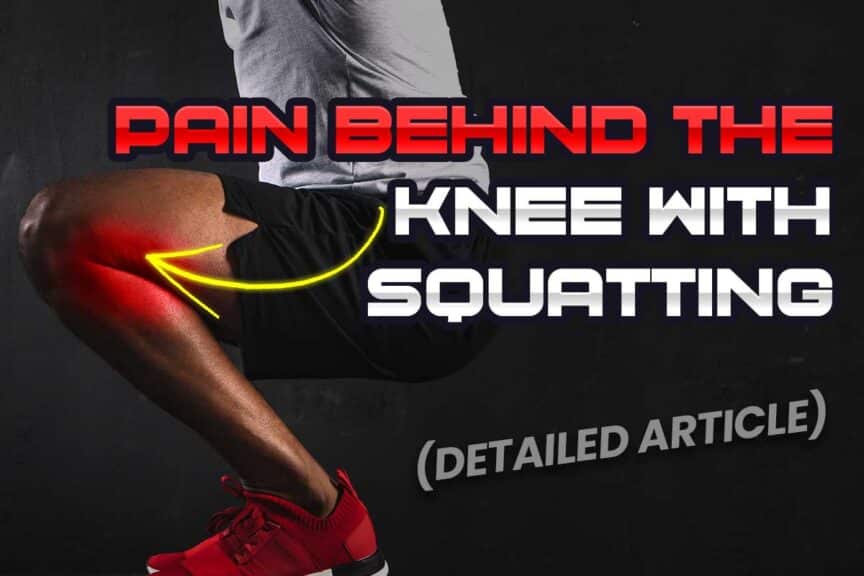Few things will derail a squat session or lower body workout quicker than knee pain. If you’re experiencing pain in the back of your knee whenever you’re squatting (be it for a workout or even just for daily activities), there are some common reasons why it might be occurring. This article aims to help you better understand what might be going on and how to best resolve the issue.
Pain behind the knee when squatting is often the result of a tight popliteus muscle, hamstring or calf muscle issues, effusion (swelling) within the joint capsule (known as a Baker’s cyst), or previous injuries. Solutions involve optimizing muscle health and modifying the squat as needed.
So, if you want all of the fine details, keep on reading!
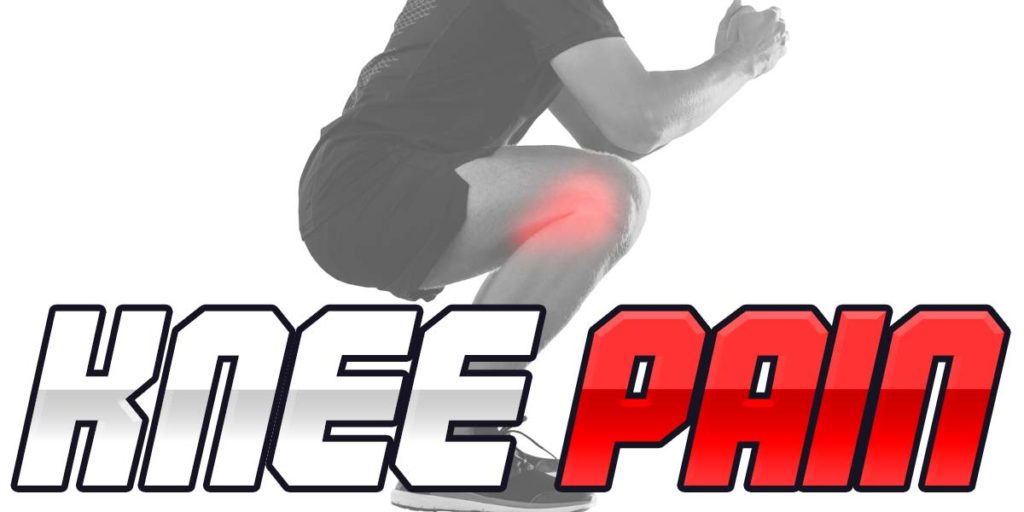
ARTICLE OVERVIEW (Quick Links)
Click/tap on any of the headlines below to instantly read that section!
Issue 1: The Popliteus Muscle
Issue 2: Baker’s cyst
Issue 3: Hamstring dysfunction
Issue 4: Calf muscle issues
Issue 5: Joint issues
Issue 6: Previous injury
Related article: Knee Pain from Leg Extensions: Why it Happens & How to Fix it
Disclaimer: While I am a physical therapist, I am not YOUR physical therapist. As a result, I cannot tell you whether or not any treatments or training methodologies mentioned on this website or in this article may or may not be appropriate for you, including pain behind your knee when squatting. By following any information within this post, you are doing so at your own risk. You are advised to seek appropriate medical advice for any pain you may be experiencing.
As we start this article off, keep in mind that there could be other conditions or combinations of issues that could be driving or contributing to your back-sided knee pain. So, just remember that I’m only listing some of the more common conditions that I’ve seen afflict lifters and active individuals with this condition. I’d advise you to get a proper evaluation if this problem is persistent or more than just mildly irritating.
Issue 1: The Popliteus Muscle
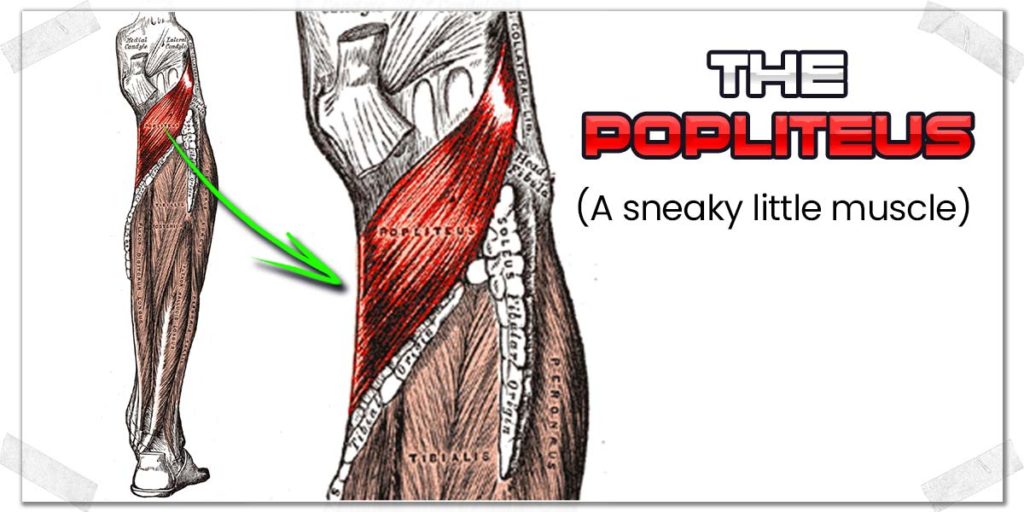
Let’s start off with a little muscle that has a notorious reputation for wreaking absolute havoc on the knee — which often manifests as pain, discomfort or a sensation of tightness in the back of the knee. If this little guy is tense or tighter than normal (i.e., has a high resting tone), you’ll feel it somewhere in the back of your knee.
The popliteus is a relatively small muscle that crosses the back of the knee joint. It sits underneath the hamstrings and the calf muscles. Its primary role is to assist with initiating the bending process of the knee and slightly rotating the shinbone inwards (known as medial tibial rotation).
I treat this muscle constantly in the clinic. For many patients, it’s the underlying cause of their knee pain, and after giving it some dedicated work for a session or two, they’re back to squatting and performing other physical activities pain-free.
Pro tip: A popliteus muscle with too much resting tension (muscle tone) will typically have sore spots that are quite tender when given deep pressure (such as a thumb) over the area. These areas of high tension, which can feel noticeably more firm than the other areas of the muscle, are known as trigger points.
How to relax the popliteus muscle.
The popliteus can be a wee bit tricky to treat; it sits underneath the gastrocnemius (calf) and soleus muscle and a portion of the biceps femoris (hamstring) tendon. In addition to this, there is a vein, artery, and nerve that run directly over the top of it, so you don’t want to press and massage all willy-nilly over the center of the back of the knee (it can irritate the nerve and be rather uncomfortable).
Nonetheless, there are one or two key spots that are safe to press, often which are where the muscle’s trigger points are located. Keep in mind that the following technique typically works MUCH better when performed by a qualified professional who has additional insight and training in treating these types of issues.
Regardless, if you want to do this following muscle release technique on yourself, you can certainly do so, as providing a firm, sustained pressure overtop of the trigger points of the popliteus muscle can help to reduce its resting tension. This can help reduce pain and restore proper tone to the muscle.
Here’s how to do it:
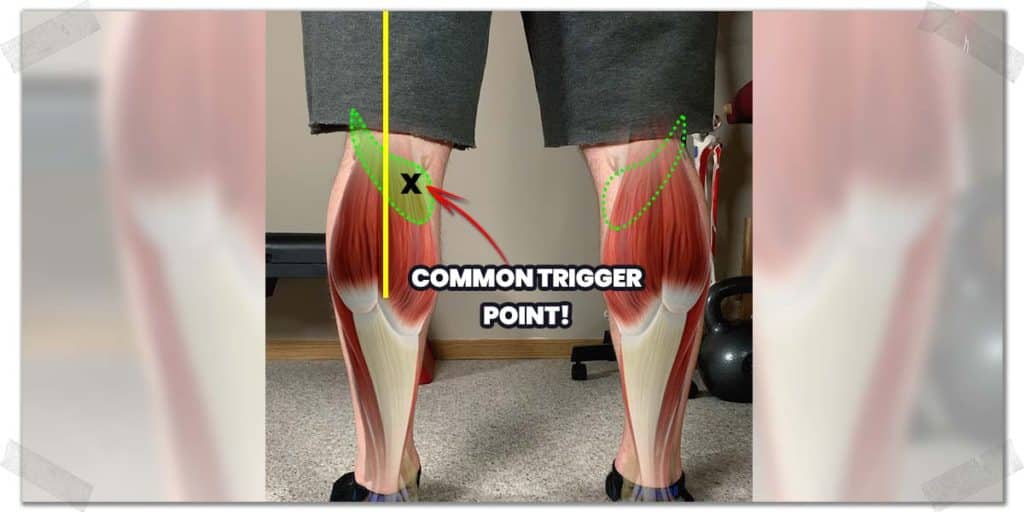
- Sit on the floor or a surface where you can bend your knee, so your foot is at the same height as your sit bones.
- Take your thumbs (or lay facedown and have someone do this for you) and press them into the upper part of your calf, just below the knee joint (try to avoid pressing down the midline of the back of the leg — where the sciatic nerve is).
- Press firmly enough (hunt around a bit, if needed) to elicit a strong but tolerable aching feeling underneath your thumbs. If the pain is familiar (i.e., is “your” pain), hold this pressure for around thirty seconds.
Pro tip: If this technique feels therapeutic for you, consider performing it once or twice per day (at least 8 hours apart) for a few weeks or until your knee pain is no longer present when squatting.
Issue 2: Baker’s cyst
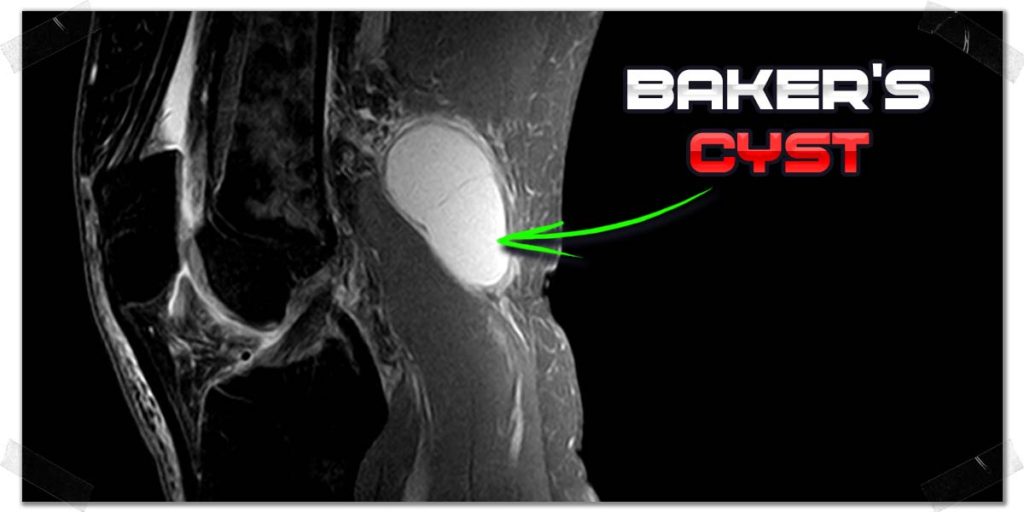
A Baker’s cyst, which is perhaps a bit unnerving sounding, is typically a benign condition involving a unique type of swelling in the back of the knee. The swelling results from synovial fluid that has herniated from the joint’s synovial membrane or a particular bursa.
This accumulation of fluid behind the knee, if significant enough, can lead to sensations of tension or discomfort with movement such as squatting or when fully straightening (extending) the knee.
For middle-aged adults, a Baker’s cyst often results from an underlying mechanical issue within the knee, such as osteoarthritis or a meniscal tear.1–3 As a result, if it’s confirmed that you have a Baker’s cyst, you’ll want to work with a healthcare professional who can help you determine the underlying cause (if one exists) for why the cyst occurred.
Treating a Baker’s cyst
Most Baker’s cysts are relatively benign, meaning they’re not harmful.4 If the cyst becomes large enough, however, it could lead to further complications and higher levels of pain or discomfort. If the cyst is highly problematic, aspiration (draining the cyst) may be required, or a corticosteroid shot might also be administered.
Thankfully, most Baker’s cysts respond to conservative measures, including anti-inflammatory medications and modifications to physical activities. It can take some time and patience to get the discomfort under control, but generally speaking, so long as your squats, exercises or other physical activities aren’t provoking your knee pain and making it worse, it’s likely just fine to carry on with them.
That being said, you may have to forego squats for the time being or may have to modify them (or other exercises) in ways that do not irritate or worsen the back of your knee. Doing so might be a bit of an inconvenience, but it will very likely only be temporary.
In the meantime, some modifications that you might be able to implement include:
- Limiting the range of motion you use when bending your knee.
- Decreasing the frequency of your knee-bending exercises or activities.
- Limiting or decreasing the overall intensity of your exercises or activities.
- Modifying or changing exercises in ways that avoid provoking or worsening your knee discomfort.
You’ll want to take some time to try any of the modifications above to determine what your knee best tolerates. As well, having a qualified healthcare practitioner guide you through the process is also a smart move to make.
Issue 3: Hamstring dysfunction
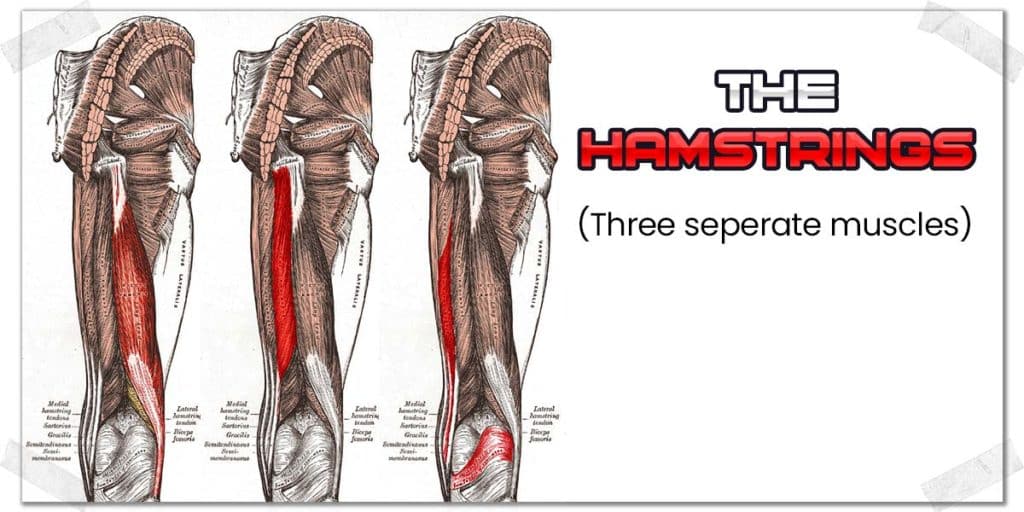
The hamstrings are a collection of three muscles on the backside of your thigh. They run from your sit bone (specifically, the ischial tuberosity) down onto the upper part of your tibia (shin bone) and the fibula. This means that these muscles cross the backside of the knee joint.
If the muscles are in any way irritated, abnormally tight, or otherwise unhealthy, it may lead to sensations of discomfort behind the knee. This is especially true if the tendons of any of the hamstring muscles are unhealthy, which results in a condition known as tendinopathy. A muscular strain of the hamstring muscles can also lead to discomfort behind the knee.
Treating hamstring dysfunction
As with pretty much any other condition, you’ll want to start out by getting to the root cause of the issue. In the case of the hamstrings, this means determining (ideally through the assessment of a qualified healthcare professional) what specifically is going on with your hamstrings.
If it’s simply a case of your hamstrings being tighter than they otherwise should be, opting for soft tissue treatments, such as massages, and other interventions designed to help the muscles relax, can be effective options.
Related article: One Hamstring Tighter Than the Other? Here’s Your Solution
If it’s determined that your hamstring discomfort is the result of a muscle strain, or tendon condition (such as irritation or tendinopathy), you’re going to want to implement a dedicated rehabilitation regimen that can help optimize and restore the health of the affected tissue(s).
How exactly to do so is beyond the scope of this article. Still, I’ll quickly mention that it may likely be worth your time to seek out an orthopedic physical therapist who can point you down the right path. Even if it’s just for one or two sessions, they can show you exercises, movements and techniques that you can implement into a home exercise program, which can help you get back to optimal, pain-free knee function.
Issue 4: Calf muscle issues
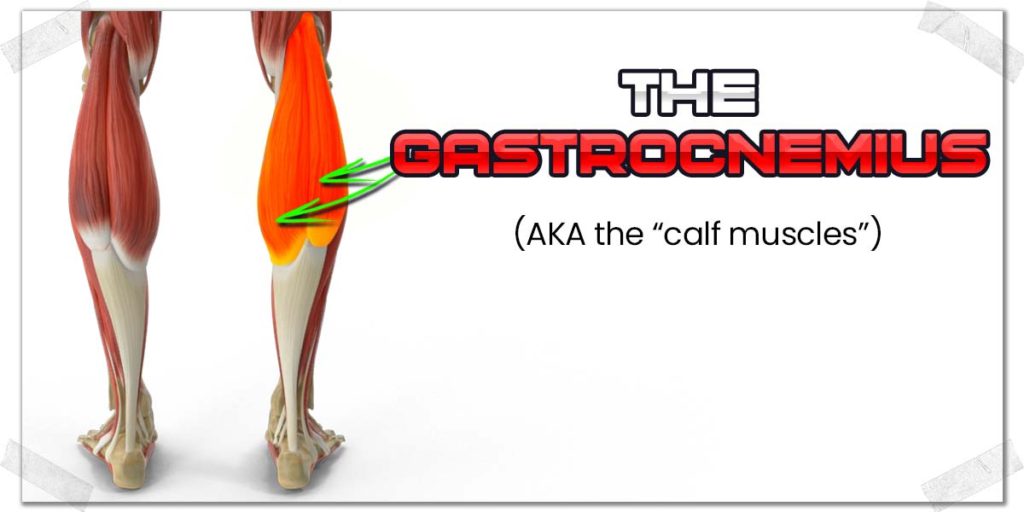
The calf muscle (anatomically called the gastrocnemius muscle) is another muscle that can cause pain or discomfort behind the knee if it’s dysfunctional to some capacity. It’s frequently overlooked or dismissed by those with posterior (back-sided) knee pain since not everyone knows that this muscle actually crosses the knee joint on its backside.
Just like with the hamstring muscles, dysfunction of this muscle (or its tendons) can lead to perceptions of pain or discomfort behind the knee. Like any other muscle in the body, the calf muscle is susceptible to being overworked and becoming strained. While this pain is typically more felt in the belly of the muscle (in either of the two heads), a strain of the upper portion of the calf may lead to discomfort or pain behind the knee.
Pro tip: Another very similar muscle, the soleus, sits directly underneath the calf muscle. Its function is nearly identical; however, it does not cross the back of the knee joint as the calf muscle does.
Treating the calf muscles
If the underlying issue of your knee pain is coming from the calf muscle, you’ll want to nail down the specifics of the issue, be it a strain, general tightness, an issue with the tendon, etc.
In my clinical experience, I find that the most common underlying issue with this muscle (regarding knee pain) is simply high resting muscle tone (tension) within the muscle itself. People tend to know if it’s a muscle strain since a muscle strain is typically felt as a sudden, instant pain with a specific movement, with lingering pain after that. But again, if you’re not certain of what’s going on, get a qualified professional to assess the area.
Thankfully, there are some very straightforward and effective ways to self-massage and relax the calves. If getting treatment from a qualified professional is out of the picture for you, you could opt to try the following muscle relaxation techniques:
- Foam rolling the calves
- Using a tiger tail
- Self-massaging the muscles
If you want the breakdown on how to do any of these techniques, check out my article:
Issue 5: Joint issues of the knee
The two main joint issues you’re most likely to be up against when experiencing back-sided knee pain when squatting are:
- Osteoarthritis
- A meniscal injury
Let’s look at each one in a bit more detail.
Osteoarthritis of the knee
Osteoarthritis is a type of arthritis that affects the body’s joints due to wearing down or destruction of the cartilage. It’s the most common joint disease in humans and is typically most prevalent in individuals above 45 years of age.5
There can be different reasons as to why these arthritic changes take place. Still, the end result is usually pain and dysfunction within the knee joint. While the pain can be felt in different areas of the knee, it’s commonly felt on the inside portion of the knee (known as the medial aspect). Still, there are certainly times when the pain may be felt behind the knee.
To confirm whether or not an arthritic change is present within the knee and whether or not your pain may be arising from this condition, you’ll need an examination from a qualified healthcare professional. A simple X-ray is often ordered to help rule in or rule out the presence of arthritis.
If your pain is determined to be coming strictly from an arthritic change within the joint, you’ll very likely need to work with a qualified professional who can help you modify your activities and exercises in ways that are appropriate for your knee and your overall abilities.
Meniscal injuries
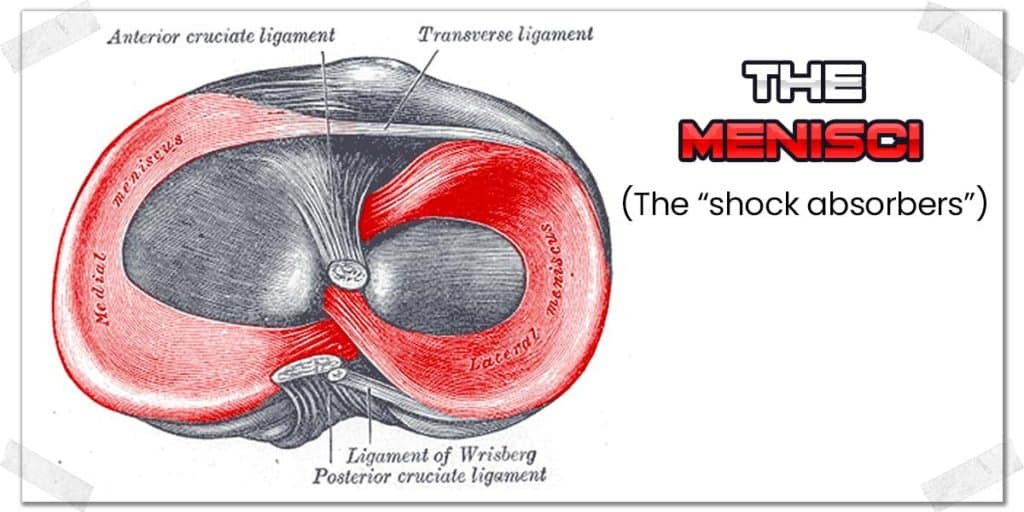
The meniscus (plural = menisci) is a cup-like piece of cartilage that sits in between the knee joint, acting as a shock absorber. There is one on the inner half of the knee and one on the outer half.
While they are rugged pieces of cartilage, they are not invincible; they can suffer various types of tears (usually from a traumatic knee injury). When torn, the knee joint can become painful due to irritation or injury of the meniscus. Physical movements, such as squats, can pinch or irritate the meniscus, which can produce the perception of pain anywhere inside the knee joint itself – including in the back of the knee.
The extent of the meniscus to spontaneously heal itself depends on the area or “zone” of the torn meniscus. The reason is that some areas or “zones” have better blood supply (vital for recovery) than others.
If you know that your meniscus is the chief cause of your pain, you may have success with performing mobilizations with movements (MWMs), Either by yourself (which can be a bit tricky) or with the help of a qualified physical therapist.
The concept or theory behind the MWM is that creating slight positional changes within the joint as it is moving can help to free up the meniscus in ways that avoid it getting pinched or caught when otherwise moving without these slight positional alterations.
They tend to be quite therapeutic for several patients whom I’ve treated. So, if you want to learn more of the specifics, I’d advise you to read up on the literature discussing MWMs, which were developed by a physical therapist named Brian Mulligan.
Issue 6: Previous injury
Sometimes it’s possible that the result of knee pain isn’t from anything recent but rather from something that happened previously. In the world of physical rehabilitation, I’ll assure you that it’s not unheard of to have a previous injury (that you haven’t given any thought to for years) rear its ugly head seemingly out of nowhere and start getting your attention with pain.
Obviously, if you’ve never experienced any traumatic injuries to your knee, thigh, or shin bone, you won’t need to read over this section. However, if you’ve ever had a moderate or more significant injury to your knee or surrounding area, this previous incident could have set something in motion that is now resulting in your pain.
Of course, there’s no way I could possibly tell you what it may be; however, a previous injury that you believed to be behind you could now be manifesting as a Baker’s cyst, arthritis, or a seemingly myriad of other pain-provoking conditions behind your knee.
If any injuries you incurred with your knee were rather significant (torn structures, surgery, etc.), I’d imagine you would have some intuition as to whether or not your current pain arises from this old injury.
Significant types of knee trauma can result in posterolateral corner injuries, which are a unique type of injury to the back of the knee. They tend to result in massive trauma to one or more structures within the region.
If you have had previous knee trauma and suspect that it may be playing a role in your knee pain, you’re best off to get an assessment and treatment by a qualified physical therapist or other healthcare professional, as there’s simply too much at play here to discuss within a blog article.
Final thoughts
There are numerous reasons for pain behind the knee when squatting, some of which are much more common than others. If this not-unheard-of issue is present with your squats, take some time to navigate the situation and potential reasons as to why it may be occurring; don’t just push through the pain and hope for it to go away. If it becomes more than just an intermittent and minor nuisance, get some insight from a qualified professional who can help you get back to squatting without any pain or modify your movements and exercises in ways that are best for you.
References:
4. Baker’s Cyst. Physiopedia. Accessed May 5, 2022. https://www.physio-pedia.com/Baker%27s_Cyst

Hi! I’m Jim Wittstrom, PT, DPT, CSCS, Pn1.
I am a physical therapist who is passionate about all things pertaining to strength & conditioning, human movement, injury prevention and rehabilitation. I created StrengthResurgence.com in order to help others become stronger and healthier. I also love helping aspiring students and therapists fulfill their dreams of becoming successful in school and within their clinical PT practice. Thanks for checking out my site!

